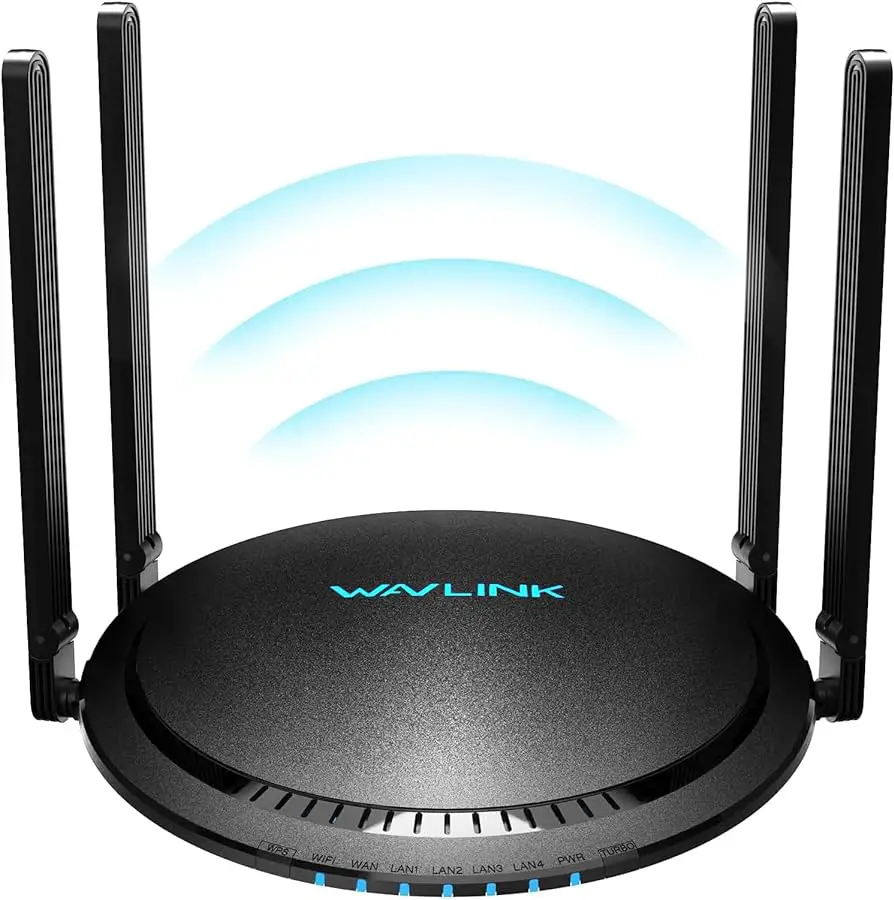Spectrum Internet offers two frequency options: 2.4 GHz and 5 GHz. When choosing between Spectrum Internet 2.4 GHz and 5 GHz, it’s important to understand their differences and how they can affect your internet connection.
The 2. 4 GHz frequency provides a wider range and is more suitable for larger homes or spaces, but it can be more susceptible to interference from other devices. On the other hand, the 5 GHz frequency provides faster speeds and less interference, making it ideal for smaller homes or spaces with multiple devices connected at once.
Overall, the best choice depends on your specific needs and the layout of your home or space.
Understanding The Difference Between 2.4 Ghz And 5 Ghz Frequencies
The Basics of Wireless Frequencies
When it comes to choosing the right wireless frequency for your home internet connection, it’s important to understand the difference between 2.4 GHz and 5 GHz frequencies. These frequencies refer to the wireless bands used by routers to transmit and receive data. While both frequencies have their advantages and disadvantages, each one is suited for different scenarios and user needs.
Pros and Cons of 2.4 GHz Frequencies
2.4 GHz frequencies have been around for a long time and are the most widely used wireless band. One of the main advantages of 2.4 GHz is its wide range, which allows for better coverage in larger areas. It also has better penetration through walls and obstacles, making it ideal for homes with multiple rooms or thick walls.
However, one of the downsides of 2.4 GHz is its susceptibility to interference from other wireless devices, such as cordless phones, baby monitors, and microwave ovens. This can result in slower speeds and decreased performance, especially in crowded environments like apartment buildings or urban areas.
In addition, the 2.4 GHz band offers fewer non-overlapping channels compared to the 5 GHz band. This means that if you live in an area with multiple Wi-Fi networks, you may experience more interference and signal congestion, leading to slower internet speeds and reduced overall performance.
Pros and Cons of 5 GHz Frequencies
On the other hand, 5 GHz frequencies offer faster speeds and less interference compared to 2.4 GHz. With fewer devices operating on this band, you can enjoy faster download and upload speeds, making it ideal for activities that require high bandwidth, such as streaming HD videos or online gaming.
Moreover, the 5 GHz band provides more non-overlapping channels, allowing for better signal quality and reduced interference, even in densely populated areas. This makes it a great choice for users who live in apartment complexes or urban environments.
However, it’s important to note that the range of 5 GHz is somewhat limited compared to 2.4 GHz. The higher frequency means that the signal doesn’t penetrate walls and obstacles as well, which may result in decreased coverage in larger homes or areas with many obstructions.
Overall, understanding the difference between 2.4 GHz and 5 GHz frequencies is crucial when choosing the right wireless band for your Spectrum internet connection. Consider your specific needs, such as range, speed, and interference, to make an informed decision that ensures optimal performance and connectivity.
Factors To Consider When Choosing Between 2.4 Ghz And 5 Ghz Frequencies
When it comes to choosing the right Wi-Fi frequency for your Spectrum Internet connection, there are a few factors you need to consider. The two main options available are the 2.4 GHz and 5 GHz frequencies, each with its own advantages and considerations. In this blog post, we will explore these factors to help you make an informed decision.
Coverage Area and Range
One of the key factors to consider when choosing between the 2.4 GHz and 5 GHz frequencies is the coverage area and range.
The 2.4 GHz frequency has a longer range compared to the 5 GHz frequency. This means that it can provide better coverage in larger areas and is less affected by obstacles such as walls and furniture. However, due to its popularity and the large number of devices that utilize this frequency, it is more prone to interference and congestion resulting in slower speeds.
On the other hand, the 5 GHz frequency offers faster speeds and better performance in shorter ranges. It is ideal for smaller spaces and areas with fewer obstacles. However, its higher frequency can result in reduced coverage compared to the 2.4 GHz frequency. It is less susceptible to interference and congestion due to its less crowded nature, which can lead to more reliable and stable connections.
Interference and Congestion
Another important consideration when choosing between the 2.4 GHz and 5 GHz frequencies is the potential for interference and congestion.
As mentioned earlier, the 2.4 GHz frequency is heavily crowded, resulting in higher chances of interference from other devices such as microwaves, cordless phones, and neighboring Wi-Fi networks. This interference can lead to slower speeds and a less stable connection.
On the other hand, the 5 GHz frequency operates on a less crowded spectrum, minimizing the chances of interference from other devices and Wi-Fi networks. This makes it suitable for environments with a high concentration of devices or dense residential areas where multiple Wi-Fi networks may be in close proximity.
Device Compatibility
Device compatibility is another crucial factor to consider when choosing between the 2.4 GHz and 5 GHz frequencies.
The 2.4 GHz frequency is widely supported by older devices and most Wi-Fi enabled devices in the market today. This means that you can connect a wide range of devices, including smartphones, tablets, laptops, and IoT devices, without any compatibility issues.
However, it’s worth noting that newer devices and technologies, such as some smart home devices and high-end streaming devices, offer support for the 5 GHz frequency. If you have such devices or plan to upgrade in the future, choosing a router that supports the 5 GHz frequency will ensure compatibility and better performance.
In conclusion, when choosing between the 2.4 GHz and 5 GHz frequencies for your Spectrum Internet connection, consider the coverage area, interference and congestion, and device compatibility. If you need wider coverage and compatibility with older devices, the 2.4 GHz frequency may be the better option. However, if you prioritize faster speeds, better performance in shorter ranges, and compatibility with newer devices, the 5 GHz frequency is the way to go.
Optimizing Your Wi-Fi Experience: Tips And Tricks For Choosing The Right Frequency
Choosing the right frequency for your Wi-Fi network is crucial for optimizing your internet experience. The two main frequencies to consider are 2.4GHz and 5GHz. Each frequency has its own benefits and considerations, so it’s important to understand how they work and how to make the most of their capabilities.
Analyzing Your Wi-Fi Environment
Before deciding on a frequency, it’s important to analyze your Wi-Fi environment. Factors such as the size of your home or office space, the number of devices connected, and the presence of walls or other obstructions can impact the performance of your Wi-Fi network. By evaluating these variables, you can make an informed decision about which frequency to choose.
Adjusting Router Settings for Maximum Performance
Once you’ve analyzed your Wi-Fi environment, you can optimize your router settings to maximize performance. Some key settings to consider are:
- SSID Selection: Ensuring your router’s SSID selection is set to “YES” allows the router to automatically choose the best frequency for your devices.
- Wireless Setup: Access the wireless setup menu on your router and adjust the radio setup to your desired frequency. Don’t forget to save your changes to apply them.
Benefits of Dual-Band Routers
Dual-band routers offer the best of both worlds by supporting both 2.4GHz and 5GHz frequencies. Some benefits of using a dual-band router include:
- Flexibility: With a dual-band router, you can choose the frequency that best suits your needs. Use the 2.4GHz band for better coverage and compatibility with older devices, or switch to the 5GHz band for faster speeds and less interference.
- Reduced Interference: The 5GHz band is typically less crowded, which means less interference from neighboring networks or other devices.
- Improved Performance: Dual-band routers can distribute devices across both frequencies, reducing congestion and improving overall network performance.
By following these tips and tricks, you can optimize your Wi-Fi experience by choosing the right frequency for your network. Whether you decide on 2.4GHz, 5GHz, or a dual-band router, understanding your Wi-Fi environment and adjusting your router settings will help ensure a smooth and reliable internet connection.

Credit: www.pcmag.com
Frequently Asked Questions Of Spectrum Internet 2.4 Ghz Vs 5Ghz
How Do I Change My Wi-Fi From 5Ghz To 2.4 Ghz Spectrum?
To change your Wi-Fi from 5GHz to 2. 4GHz spectrum, sign in to your Spectrum router account. Go to the NETWORK tab and select WIRELESS. Under the SSID selection, choose YES and click APPLY. Make sure to save your changes.
Can I Use Both 2.4 And 5Ghz At The Same Time?
Yes, you can use both the 2. 4 and 5GHz frequencies simultaneously on a dual-band router. Simply access your router settings and enable both frequencies under the wireless network options.
What Is The Difference Between 2.4 Ghz And 5Ghz Spectrum?
The 2. 4 GHz spectrum provides a wider range, better at penetrating obstacles, and more devices can connect to it. On the other hand, the 5 GHz spectrum offers faster speeds and less interference from other devices. It’s ideal for bandwidth-intensive activities like streaming and gaming.
How Do I Enable 2.4 Ghz On My Router?
To enable 2. 4 GHz on your router, sign in to your Spectrum router account using your ADMIN credentials. Under the NETWORK tab, select WIRELESS. Under the SSID selection, choose YES. Then select APPLY to save your changes.
Conclusion
Choosing between 2. 4 GHz and 5 GHz spectrum for your Spectrum Internet connection depends on your specific needs. While 2. 4 GHz offers better coverage and is suitable for larger areas, 5 GHz provides faster speeds and is ideal for crowded areas with multiple devices.
Remember to consider factors like distance from the router and interference to determine which frequency band is best for you. With Spectrum, you can easily optimize your wireless network settings through your router’s admin portal for a seamless internet experience.

